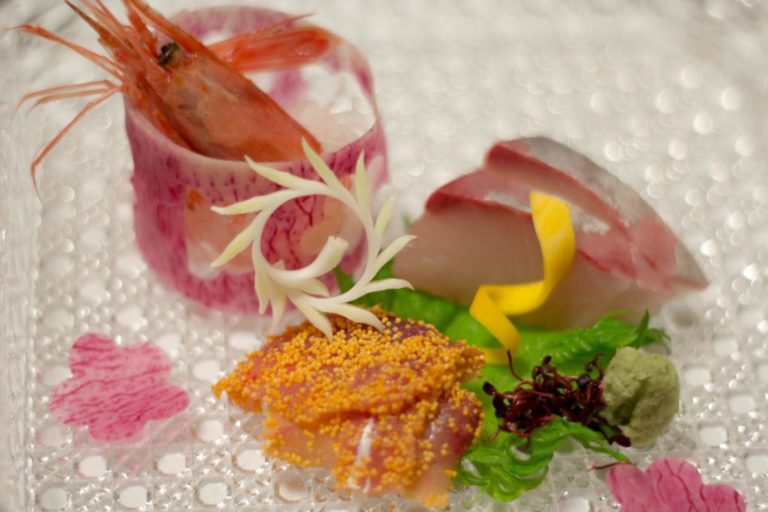As well as unique cuisines that have developed over centuries, embracing traditions and changing times along the way, every country has its own trophy cabinet of dishes that they’re proud to share with the world. Here are three indulgent and utterly original delights to sample when travelling through Southeast Asia that could belong nowhere else.
1. Kaiseki in Japan

Although kaiseki is typically a dining experience that is associated with the ancient city of Kyoto, sampling the epitome of traditional Japanese cookery is a must when in the capital, with the best restaurants in Tokyo to offer authentic Kyoto kaiseki experiences filling up weeks in advance.
This multi-course feast of epic proportions is often hailed as a form of art, as its creators work diligently to balance aesthetics, colours, tastes and textures harmoniously, utilising the freshest, seasonal ingredients. Attention to detail and delicate presentation has become part of the tradition in itself, as chefs strive to create something that is characterised by excellence.
Although the original kaiseki comprised just a bowl of miso soup and three side dishes, today, the banquets are far more elaborate, with everything from snow crab and smoke shittahki, to raw fish and simmered vegetables appearing on the menu. Putting nature onto a plate is a huge part of what these dedicated chefs do, and when in Tokyo the likes of Akasaka Kikunoi will provide a culinary journey through the seasons.
2. Kuih in Malaysia

For those with a sweet tooth and no aversion to the scales, kuih is the ultimate snack food. Widely available across the likes of Malaysia, Indonesia and Singapore, this myriad of delicious snack foods are eaten throughout the day, with no tie to a particular meal, and have an endearing history.
Traditionally, elderly grandmothers would grasp the kuih-making gauntlet and use just about any ingredients they could find to instinctively create snacks for the family, without the use of scales or measurements. Today this has evolved and you will find kuih sold on the streets and even in cafés all over Asia.
Everything from cakes and cookies to pastries and biscuits falls into the kuih family, with coconut and palm sugar serving as common ingredients across the board. Colourful, creative and all round addictive, each of these tasty morsels has a distinctive flavour that is sure to leave an imprint on your taste buds.
3. Korean Barbecue

This old-school form of Korean cookery has gained popularity worldwide in recent years thanks to its reputation as an entirely unique concept. More than just a staple in Korean dining – it’s considered an event. Friends, family, neighbours, colleagues – you name it – all gather round a charcoal grill built into the dining table to share an array of meats, marinated in traditional Koreans spices.
It’s very much a DIY experience and is a great opportunity to share and socialise with a beer or two. The most fascinating aspect of Korean barbecue is the side dishes – you just never know what you are going to get. Often the number of side dishes will far outweigh table space, with everything from spicy, fermented cabbage to apple salad on offer. The meat and sides are complemented by an array of pastes and sauces which are all packed tightly together into a lettuce leaf for consumption.
The most commonly available meats are pork and beef, however a small number of restaurants will offer chicken. A popular choice amongst those visiting the capitol – you won’t need to travel far before you stumble upon a place to chow down on chargrilled perfection.
